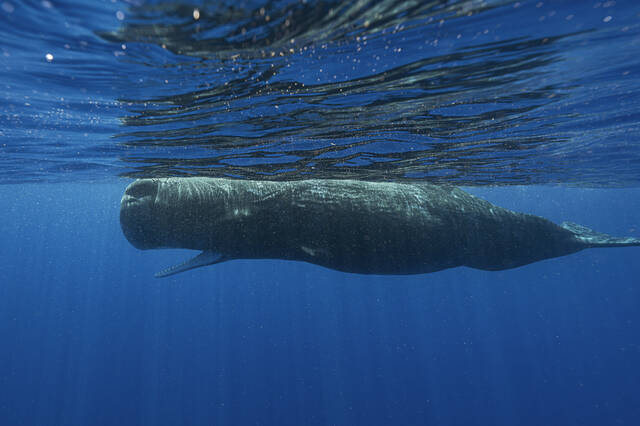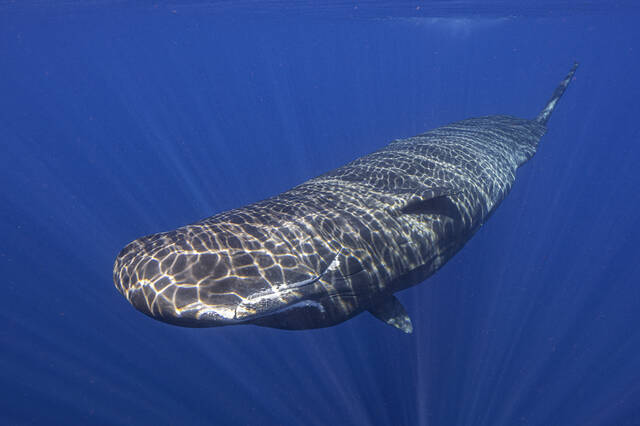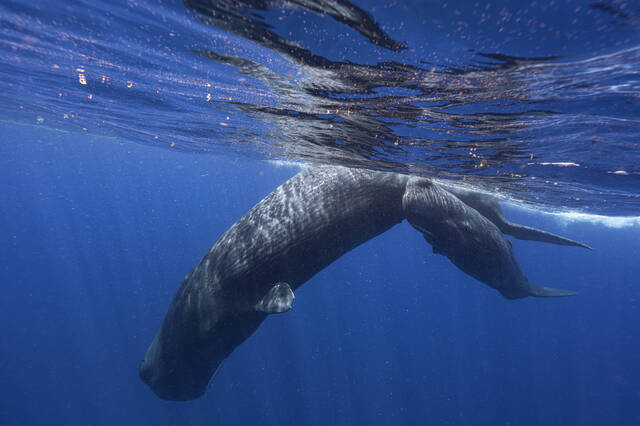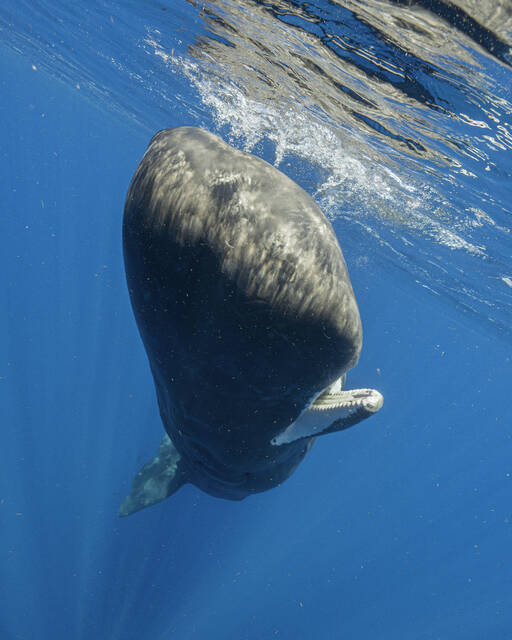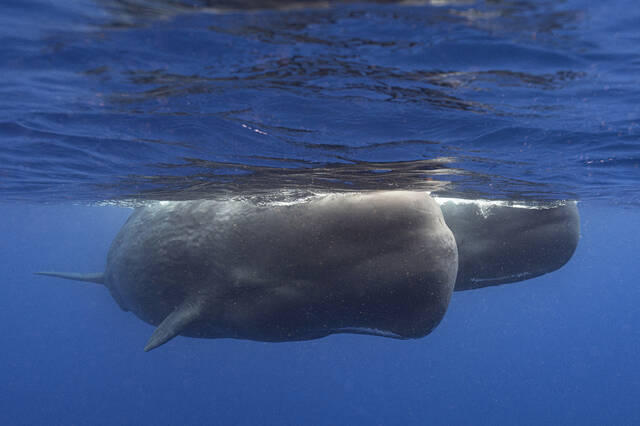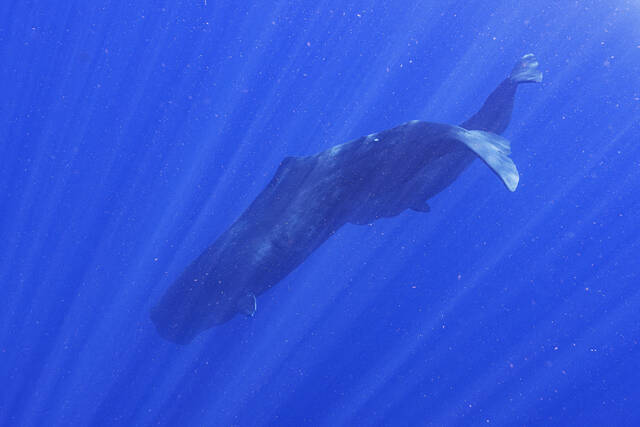Scientists are learning the basic building blocks of sperm whale language after years of effort
ROSEAU, Dominica — Scientists studying the sperm whales that live around the Caribbean island of Dominica have described for the first time the basic elements of how they might be talking to each other, in an effort that could one day help better protect them.
Like many whales and dolphins, sperm whales are highly social mammals and communicate by squeezing air through their respiratory systems to make strings of rapid clicks that can sound like an extremely loud zipper underwater. The clicks are also used as a form of echolocation to help them track their prey.
Scientists have been trying for decades to understand what those clicks might mean, with only minimal progress. While they still don’t know, they now think there are sets of clicks they believe make up a “phonetic alphabet” that the whales can use to build the very rough equivalent of what people think of as words and phrases.
“We’re now starting to find the first building blocks of whale language,” said David Gruber, founder and president of the Cetacean Translation Initiative or CETI, an effort devoted to translating the communication of sperm whales.
In a study published Tuesday in the journal Nature Communications, researchers analyzed more than 8,700 snippets of sperm whale clicks, known as codas. They say they have found four basic components they think make up this phonetic alphabet.
Pratyusha Sharma, the paper’s lead researcher, said this alphabet could then be used by the whales in an unlimited number of combinations.
“It doesn’t appear that they have a fixed set of codas,” said Sharma, an artificial intelligence and computer science expert at the Massachusetts Institute of Technology. “That gives the whales access to a much larger communication system,” she said, explaining it was as if the whales had a very large dictionary.
Sperm whales have the biggest brains of any animal on the planet at up to 20 pounds, as much as six times the size of an average human brain. Thy live in matriarchal groups of about 10 and sometimes meet up with hundreds or thousands of other whales. Sperm whales can grow up to 60 feet (18 meters) long and dive to nearly 3,280 feet (1,000 meters) to hunt for squid. They sleep vertically, in groups.
Gruber, a biology professor at the City University of New York, said sperm whales seem to have sophisticated social ties and deciphering their communication systems could reveal parallels with human language and society.
To get enough examples of the sperm whale clicks in Dominica, where there is a resident population of about 200 whales, scientists created a giant underwater recording studio with microphones at different depths. Tags on the whales also record what position they are in when clicking — for example diving, sleeping, breathing at the surface — and if there are any other whales nearby they might be communicating with.
Jeremy Goldbogen, an associate professor of oceans at Stanford University, called the new research “extraordinary,” saying it had “vast implications for how we understand ocean giants.”
Goldbogen, who was not involved in the study, said that if we were one day able to understand what sperm whales were saying, that knowledge should be used for conservation purposes, like minimizing their risk of being hit by ships or reducing ocean noise levels.
Sperm whales are classified as ” vulnerable ” by the International Union for Conservation of Nature. The whales were hunted for centuries for the oil contained in their giant heads and the species is still recovering.
Diana Reiss, a marine mammal behavior and communication expert at the City University of New York, said that scientists understand certain aspects of marine animals’ communication reasonably well, including the whistles used by dolphins and the songs sung by humpback whales.
But when it comes to sperm whales, even that basic knowledge is lacking.
“What’s new in this study is that they are trying to look at the basis for the whales’ communication system … not just particular calls they’re making,” she said.
Reiss, who was not involved in the new research, said she hoped we would one day be able to match the whales’ clicks to behavior.
“We will never understand what the clicks mean to another whale, but we may be able to understand what the clicks mean enough to predict their behavior,” she said. “That alone would be an amazing achievement,” she said.
CETI founder Gruber said millions and possibly billions of whale codas would be needed to collect enough data to try to work out what the whales are saying, but he expects AI to help speed the analysis. He said other sperm whale populations — the whales are found in deep oceans from the Arctic to the Antarctic — likely communicate in slightly different ways.
Remove the ads from your TribLIVE reading experience but still support the journalists who create the content with TribLIVE Ad-Free.

